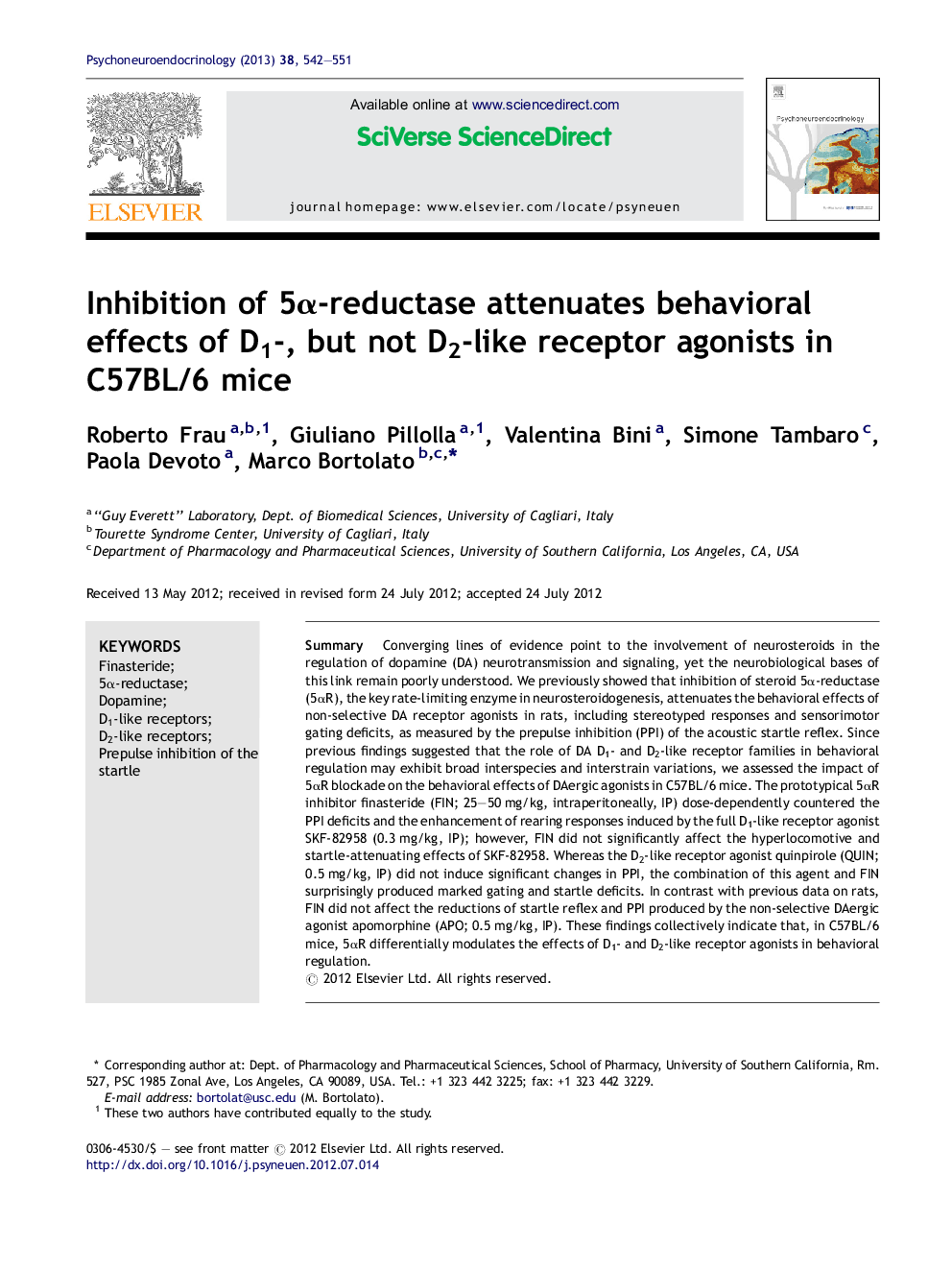| Article ID | Journal | Published Year | Pages | File Type |
|---|---|---|---|---|
| 10305852 | Psychoneuroendocrinology | 2013 | 10 Pages |
Abstract
Converging lines of evidence point to the involvement of neurosteroids in the regulation of dopamine (DA) neurotransmission and signaling, yet the neurobiological bases of this link remain poorly understood. We previously showed that inhibition of steroid 5α-reductase (5αR), the key rate-limiting enzyme in neurosteroidogenesis, attenuates the behavioral effects of non-selective DA receptor agonists in rats, including stereotyped responses and sensorimotor gating deficits, as measured by the prepulse inhibition (PPI) of the acoustic startle reflex. Since previous findings suggested that the role of DA D1- and D2-like receptor families in behavioral regulation may exhibit broad interspecies and interstrain variations, we assessed the impact of 5αR blockade on the behavioral effects of DAergic agonists in C57BL/6 mice. The prototypical 5αR inhibitor finasteride (FIN; 25-50 mg/kg, intraperitoneally, IP) dose-dependently countered the PPI deficits and the enhancement of rearing responses induced by the full D1-like receptor agonist SKF-82958 (0.3 mg/kg, IP); however, FIN did not significantly affect the hyperlocomotive and startle-attenuating effects of SKF-82958. Whereas the D2-like receptor agonist quinpirole (QUIN; 0.5 mg/kg, IP) did not induce significant changes in PPI, the combination of this agent and FIN surprisingly produced marked gating and startle deficits. In contrast with previous data on rats, FIN did not affect the reductions of startle reflex and PPI produced by the non-selective DAergic agonist apomorphine (APO; 0.5 mg/kg, IP). These findings collectively indicate that, in C57BL/6 mice, 5αR differentially modulates the effects of D1- and D2-like receptor agonists in behavioral regulation.
Related Topics
Life Sciences
Biochemistry, Genetics and Molecular Biology
Endocrinology
Authors
Roberto Frau, Giuliano Pillolla, Valentina Bini, Simone Tambaro, Paola Devoto, Marco Bortolato,
